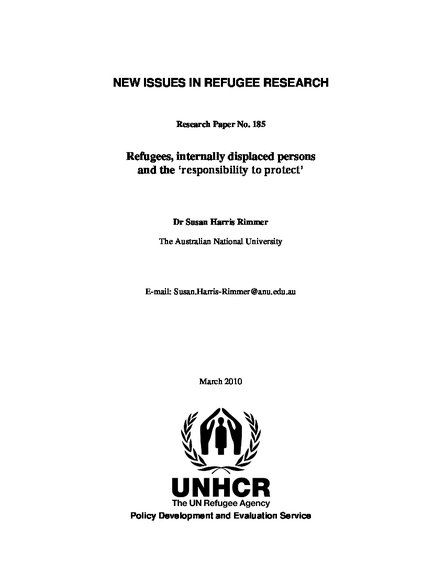
This paper explores the implementation of the prevention pillar of the Responsibility to Protect (R2P) doctrine, and assesses its relevance to protection of refugees and internally displaced persons (IDPs). I argue that a political analysis of the recent R2P debates show that the doctrine is at a juncture, and there are costs and benefits to the overall goal of refugee and IDP protection by aligning with the R2P campaign. This paper challenges the proposition that stronger international acceptance of the R2P doctrine leads inevitably to stronger refugee and IDP protection.
The R2P doctrine as set out in General Assembly resolution 60/1 (2005)1 subscribes to the conception of ‘sovereignty as responsibility’ (Deng et al 1996), and therefore advocates an enhanced role for the international community in relation to states who are unwilling or unable to protect their citizens from the most egregious crimes under international law, specifically; genocide, war crimes, and crimes against humanity, as well as ethnic cleansing (Evans 2008: 31-55).
